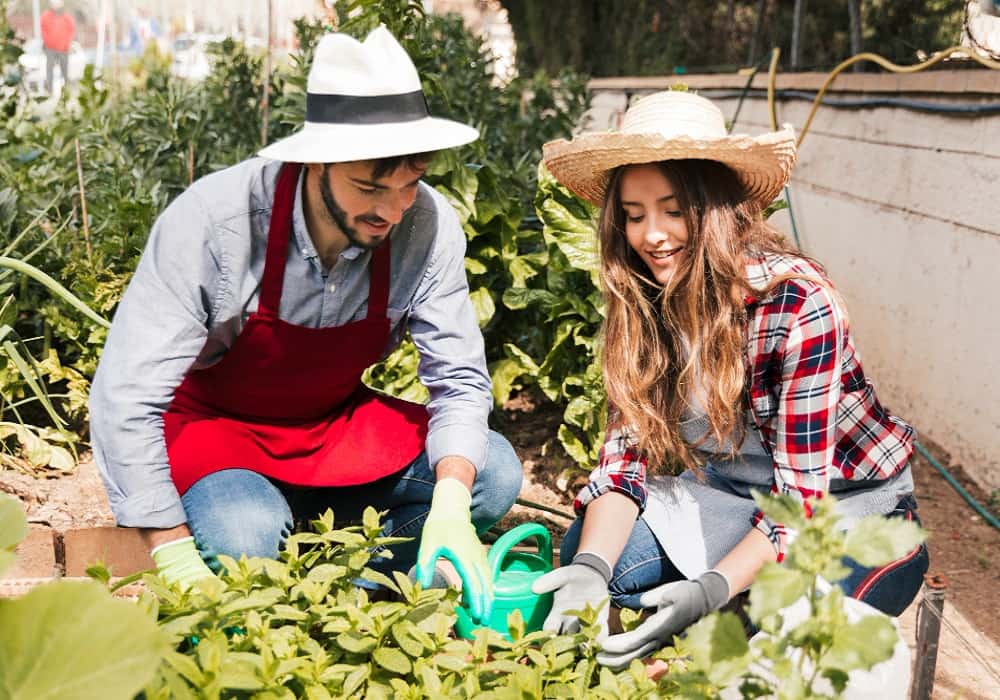5 Common Mistakes to Avoid in Gardening for Beginners India
Gardening is a rewarding and fulfilling hobby, but for beginners in India, it can sometimes be challenging due to the country’s diverse climate and soil conditions. Many new gardeners make mistakes that can hinder plant growth and overall success. By understanding these common pitfalls, you can avoid unnecessary struggles and enjoy a thriving garden. Here are five common mistakes to avoid in gardening for beginners in india and tips to ensure a healthy and flourishing green space.
1. Choosing the Wrong Plants for Your Climate
One of the biggest mistakes beginners make is selecting plants that are not suited to their local climate. India has varied climatic zones, including tropical, arid, temperate, and coastal regions. Some plants thrive in specific conditions, while others struggle.
How to Avoid This Mistake:
- Research plants that grow well in your region’s climate.
- Choose native plants as they require less maintenance and adapt better.
- Check plant labels or ask local nurseries for recommendations.
- Consider seasonal gardening and plant accordingly.
Best Plants for Beginners in India:
- Warm Climates: Marigold, Hibiscus, Basil, Okra
- Cold Climates: Broccoli, Spinach, Tulips
- Moderate Climates: Roses, Tomatoes, Mint
2. Overwatering or Underwatering Plants
Watering is crucial, but many beginners either overwater or underwater their plants, leading to root rot or dehydration.
How to Avoid This Mistake:
- Understand the water needs of different plants.
- Check the soil moisture before watering – if the top inch is dry, it’s time to water.
- Use a well-draining potting mix to prevent waterlogging.
- Water in the early morning or late evening to reduce evaporation.
Pro Tip:
For beginners, self-watering pots or drip irrigation can be excellent solutions to maintain optimal moisture levels.
3. Ignoring Soil Quality and Preparation
Poor soil preparation is another common mistake that affects plant growth. Indian soils vary from region to region, and some may require amendments to be suitable for gardening.
How to Avoid This Mistake:
- Test your soil to understand its pH and nutrient levels.
- Add organic compost, manure, or coco peat to improve soil quality.
- Use raised beds if your garden soil is not ideal for plant growth.
- Rotate crops in vegetable gardens to maintain soil fertility.
Ideal Soil Mix for Beginners:
- For Flowers: Garden soil + compost + sand (for drainage)
- For Vegetables: Loamy soil + vermicompost + coco peat
- For Succulents: Sandy soil + perlite + organic matter
4. Planting in the Wrong Location
New gardeners often overlook the importance of sunlight and plant placement. Some plants need full sun, while others thrive in partial shade.
How to Avoid This Mistake:
- Observe your garden space and identify sun-exposed and shaded areas.
- Read plant labels to determine their light requirements.
- Arrange plants based on their sunlight needs:
- Full Sun (6+ hours): Tomatoes, Sunflowers, Marigolds
- Partial Sun (3-6 hours): Mint, Ferns, Aloe Vera
- Shade (Less than 3 hours): Snake Plant, Money Plant, Peace Lily
- If space is limited, consider container gardening and move pots as needed.
Pro Tip:
Use vertical gardening for small spaces, ensuring plants get adequate light without overcrowding.
5. Neglecting Pest Control and Plant Diseases
Pests and diseases can quickly destroy a garden if not managed early. Many beginners fail to recognize early warning signs, leading to plant loss.
How to Avoid This Mistake:
- Regularly inspect plants for signs of pests like aphids, mealybugs, and caterpillars.
- Use natural pest control methods such as neem oil, garlic spray, or soap water.
- Avoid over-fertilizing, as it can attract pests.
- Maintain plant spacing to improve air circulation and reduce disease risk.
Common Pests and Organic Remedies:
- Aphids: Neem oil spray
- Mealybugs: Rubbing alcohol on affected areas
- Caterpillars: Handpick or use organic Bt spray
FAQs on Gardening for Beginners India
1. What is the easiest vegetable to grow for beginners in India?
Answer: Some of the easiest vegetables to grow are tomatoes, spinach, radish, and okra. They require minimal maintenance and grow well in Indian climates.
2. How often should I water my plants in India?
Answer: It depends on the plant type and season. During summer, watering may be required daily, while in winter, watering every 2-3 days is usually sufficient.
3. What type of soil is best for gardening in India?
Answer: Loamy soil enriched with organic compost is ideal for most plants. Adding coco peat and vermicompost improves soil structure and fertility.
4. Can I start gardening in a small apartment?
Answer: Yes! Container gardening, vertical gardening, and balcony gardening are great options for small spaces.
5. How do I keep my plants pest-free naturally?
Answer: Using neem oil, garlic spray, and keeping the garden clean can help prevent pests without chemicals.
Conclusion
Gardening is a fulfilling experience, but avoiding these common mistakes can make it even more enjoyable and successful. By choosing the right plants, managing water and soil properly, placing plants in the correct location, and maintaining pest control, gardening for beginners in India can become an easier and more rewarding journey. Start small, learn from each season, and watch your garden flourish!






